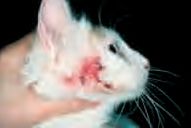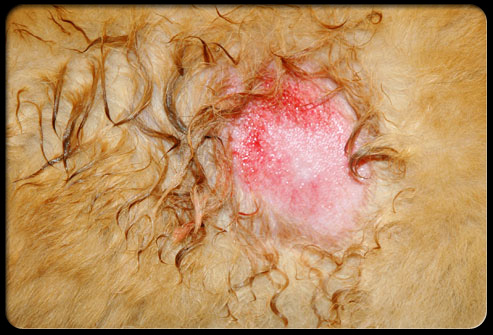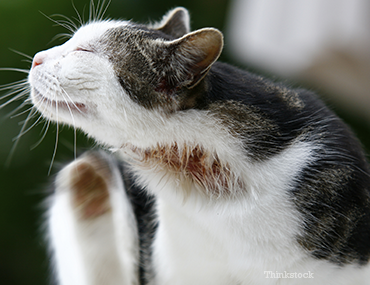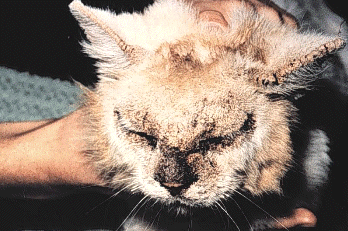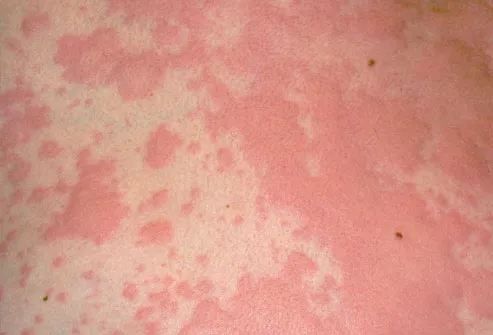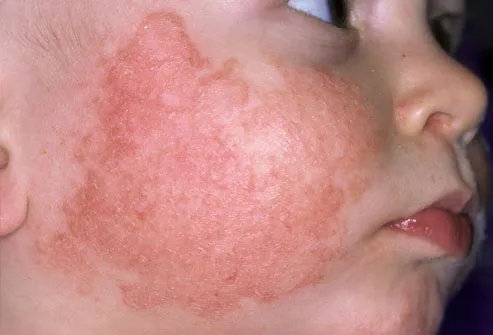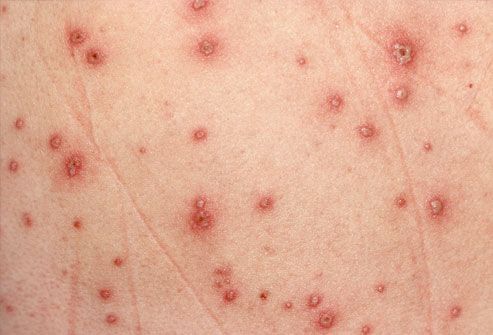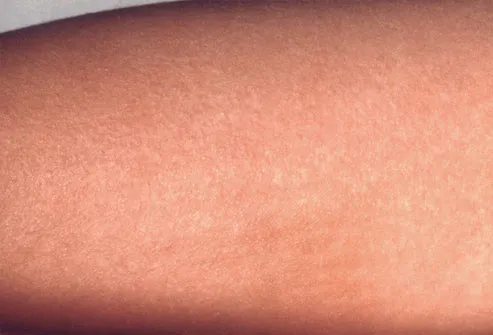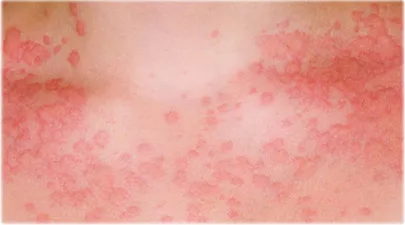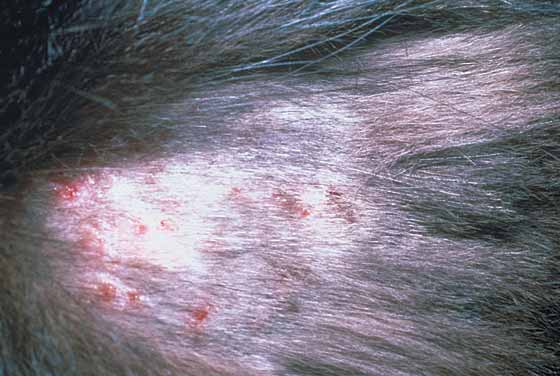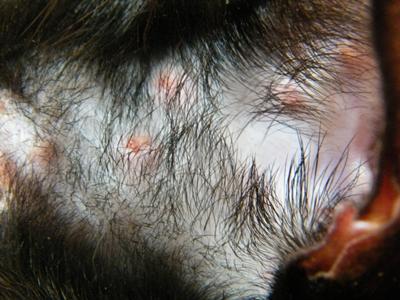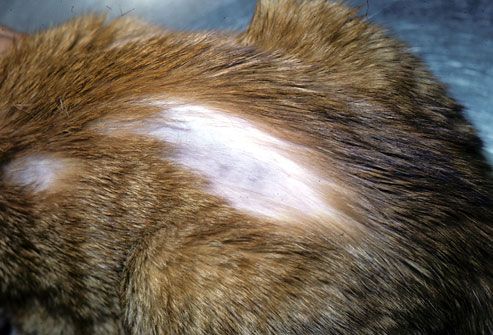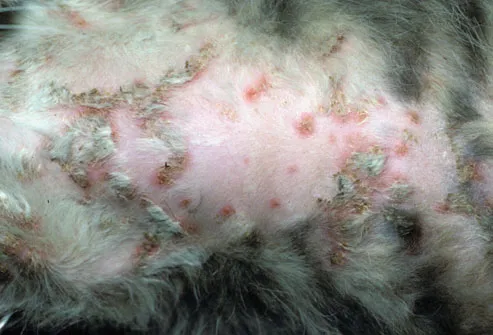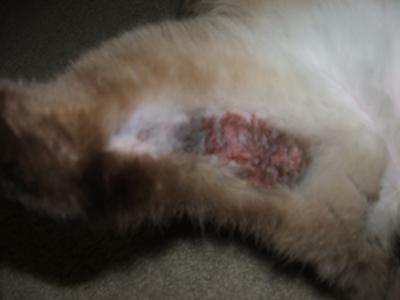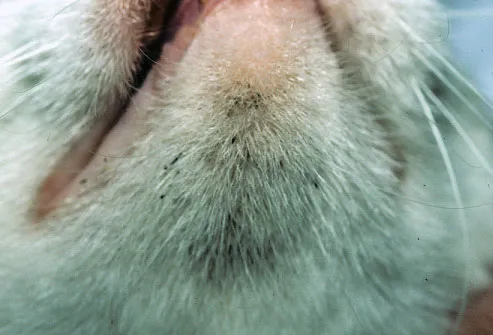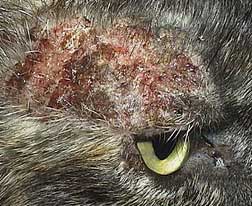Skin Diseases In Cats Biography
Source:- Google.com.pkThe condition of cat’s skin is an indication of her overall health. When a skin problem occurs, your cat may respond with excessive scratching, chewing and/or licking. A wide range of causes—from external parasites and allergies to seasonal changes and stress, or a combination of these—may be affecting your cat’s skin and should be investigated. Skin problems are one of the most common reasons pet parents seek veterinary care.
What Are Some Symptoms of Skin Problems in Cats?
Constant scratching, licking and chewing at the skin, especially around the head and neck.
Scabs
Redness or inflammation.
Round, scaly patches on the face and paws
Dry, flaky or otherwise irritated skin
Hair loss, bald patches
Rashes
Swellings, lumps or skin discoloration
Drainage of blood or pus
What Might Cause a Cat to Have Skin Problems?
One of the following may be causing an abnormality with your cat’s skin and should be investigated:
Ringworm: This highly contagious fungal infection can result in inflammation, scaly patches and hair loss. Lesions are most commonly seen on the head, ears and paws, but sometimes no signs are seen. You’ll want to have your veterinarian treat it immediately to prevent other pets and people in the household from becoming infected.
Fleas: Not only do fleas irritate the skin, cats can have an allergic response when exposed to them. Symptoms commonly include excessive scratching, thinning of hair above the base of the tail, crusts and red, raised skin lesions. Some cats may also be sensitive to flea-treatment products; certain flea collars, for example, may cause redness and irritation around the neck.
Other external parasites: Ear mites usually cause itching and redness around the ears, and a dark, coffee ground-like material can be seen in the ear canals. Lice can produce intense itching, and mange mites can cause severe flaking and scaling.
Seasonal allergies: Your cat’s constant scratching may be due to her sensitivity to common allergens from trees, mold and grasses.
Food allergies: Many foods (such as beef, milk, poultry and corn), fillers and colorings can be seen as foreign by your cat’s immune system and can lead to itching and rashes.
Grooming products: Certain shampoos and grooming products can irritate your cat’s skin.
Seasonal changes: Many cats, like people, get dry, flaky skin in the winter.
Environmental factors: Contact with certain chemicals or fabrics can cause skin irritation, as can exposure to the sun or excessive cold.
Bacterial or yeast infections: These infections most commonly follow the onset of another skin disorder.
Tumors: A variety of benign and malignant skin growths can develop in cats.
Stress: Anxiety may cause cats to excessively lick and chew, causing hair loss.
Skin Diseases In Cats Skin Diseases Holes on Face In Dogs on Legs Pictures on Hands on Arms Psoriasis Vitiligo Images
Skin Diseases In Cats Skin Diseases Holes on Face In Dogs on Legs Pictures on Hands on Arms Psoriasis Vitiligo Images
Skin Diseases In Cats Skin Diseases Holes on Face In Dogs on Legs Pictures on Hands on Arms Psoriasis Vitiligo Images
Skin Diseases In Cats Skin Diseases Holes on Face In Dogs on Legs Pictures on Hands on Arms Psoriasis Vitiligo Images
Skin Diseases In Cats Skin Diseases Holes on Face In Dogs on Legs Pictures on Hands on Arms Psoriasis Vitiligo Images
Skin Diseases In Cats Skin Diseases Holes on Face In Dogs on Legs Pictures on Hands on Arms Psoriasis Vitiligo Images
Skin Diseases In Cats Skin Diseases Holes on Face In Dogs on Legs Pictures on Hands on Arms Psoriasis Vitiligo Images
Skin Diseases In Cats Skin Diseases Holes on Face In Dogs on Legs Pictures on Hands on Arms Psoriasis Vitiligo Images
Skin Diseases In Cats Skin Diseases Holes on Face In Dogs on Legs Pictures on Hands on Arms Psoriasis Vitiligo Images
Skin Diseases In Cats Skin Diseases Holes on Face In Dogs on Legs Pictures on Hands on Arms Psoriasis Vitiligo Images
Skin Diseases In Cats Skin Diseases Holes on Face In Dogs on Legs Pictures on Hands on Arms Psoriasis Vitiligo Images

